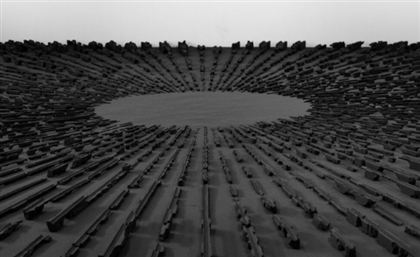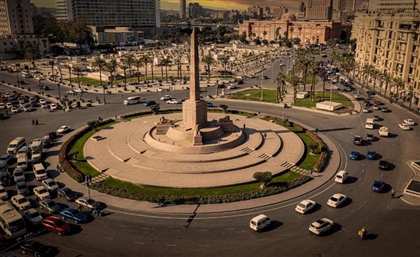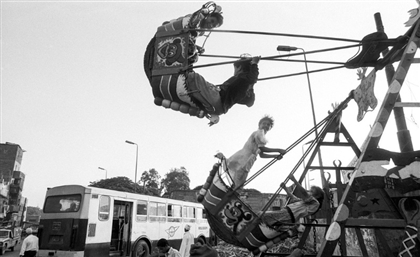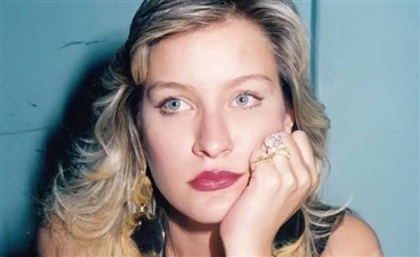Ahmed Sabry: Optical Oddities
His works are their own school of the uncanny; Ahmed Sabry combines elements from pop culture and new media with more traditional art forms to come out with pieces that are a fusion of eclecticism and clever wit.
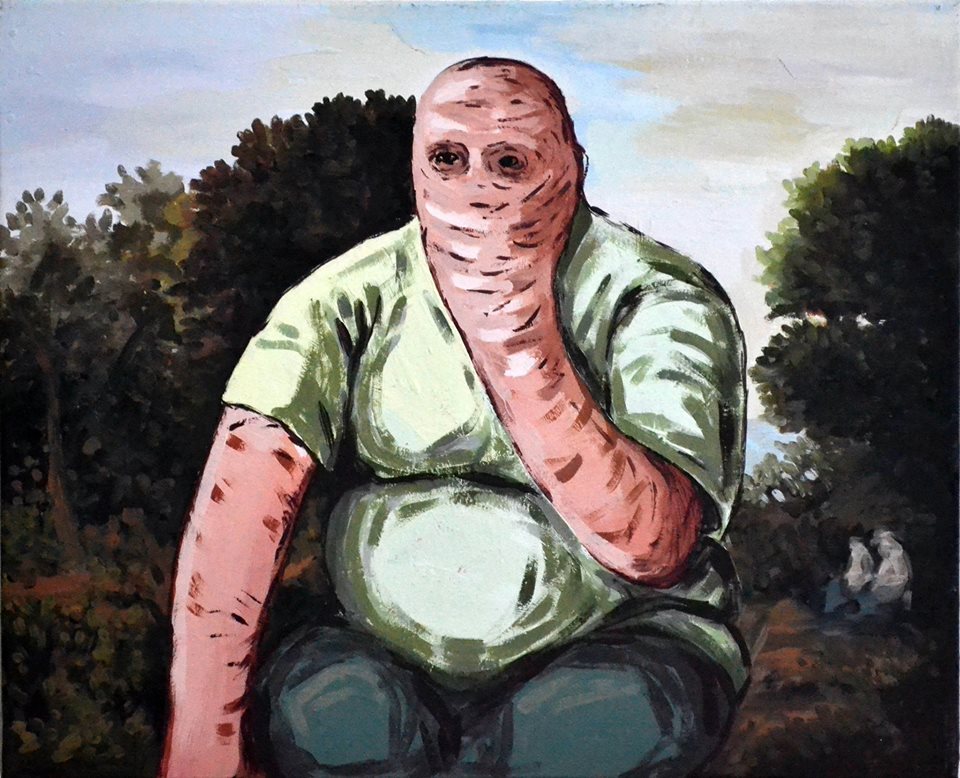
There's a deep sense of irony and incongruity in all of Ahmed Sabry's paintings that gives them a distinctive quality of being something that you might have stumbled on either in a really weird dream or an acid trip. They're unlike almost everything that's already out there, and on first impression, one doesn't entirely know what to make of what appears to be a rhinoceros running around town wreaking havoc, but all the same, the work is visually compelling to the nth degree, instantaneously peaking the viewer's curiousity and interest.
The “Rhino Story” (2013) is one among three of his previous collections that are currently on display in the Swiss Embassy, along with “The True Story of Mohanad's Death” (2011) and “El Brens TV” (2010).
“Rhino Story” was a project he worked on in conjunction with his friend, Mohammed Abdel Karim, as a visual interpretation of the story written by Abdel Karim.
“The idea behind the story is that the rhinoceros character is trying to protect certain objects that it inherited; things like a wig and a keychain. Small objects that are of value to him, and he's trying to keep them from different people who are trying to take them away. So he begins getting into a struggle with people, and then he starts getting chased by police, and he gets scapegoated in any crime that takes place in the country,” Sabry says.

Abdel Karim and Sabry agreed that they would both work completely separately, with Abdel Karim first writing the story, then sending Sabry excerpts from which he would produce paintings. The paintings are not meant to be direct illustrations of the text, but rather interpretations following the trajectory of the narrative. The collaboration resulted in an exhibition and a book.
In “El Brens TV” the textual element plays into the project in a different way. He focuses instead on the discrepancies that often arise between written text that appears on images, giving rise to a collection that farcically puts the spotlight on everything that is lost in translation between text and image. “I was interested in the relationship between the text and the image; i.e. The text imposed on an image and the picture behind it. For example, I would take a film and its subtitles, or an ad, or the news strip, and build a painting around that.”
As for “The True Story of Mohanad's Death,” he sought inspiration for the collection from a rumour that was repeatedly circulated about the death of a popular character on a Turkish soap-opera. The unsubstantiated rumour caught his attention. “I liked the way that the “news” headline was phrased” and the use of the character's name to refer to the actor, he says.

But it's his upcoming collection, entitled “The Fifth Settlement,” that is perhaps the most visually powerful. The collection depicts various scenes from films superimposed onto the stereotypical landscape that one would find hung on the wall of virtually every upper-middle class's drawing room.
“The idea of landscapes came to me when I used to go to the new satellite cities to make paintings for people there, and I was irritated by the fact that everyone's taste was basically the same. Everyone wanted this commercialised version of the landscape which originated from classical paintings,” Sabry says.
“And the classical landscape, for me, holds this sense of obscurity and vagueness. You never know where this landscape is; it could be anywhere on earth, and the nature of the lighting and colours in these landscapes also lead me to feel that this landscape doesn't actually exist anywhere. So I started taking scenes out of films and superimposing them onto the landscapes,” he continues.

“It's similar to the idea of old landscapes, from the Renaissance era for example, there would always be a scene taking place inside a landscape, and you wouldn't know why it's taking place in a landscape, and not somewhere else.”
Like, “Rhinoceros Story,” the project is also set to be turned into a book with Abdel Karim, only this time it was done in reverse, with Sabry creating the paintings, which he will then send to Abdel Karim to interpret into a story. The book and collection are set to be exhibited next spring. The project is also set to be published on a Swiss website called Prohelvetia, which is an experimental platform for artwork by Egyptian and Swiss artists, supported by the Swiss government.
Sabry works with Medrar, and leads regular art workshops as part of the system of workshops set up by Shady el-Noshkaty, whom he studied under in Helwan University.
You can find out more about Ahmed Sabry through his website or his Facebook page.
- Previous Article The Final El Fusion
- Next Article Nomades Land
Trending This Week
-
Apr 10, 2024





